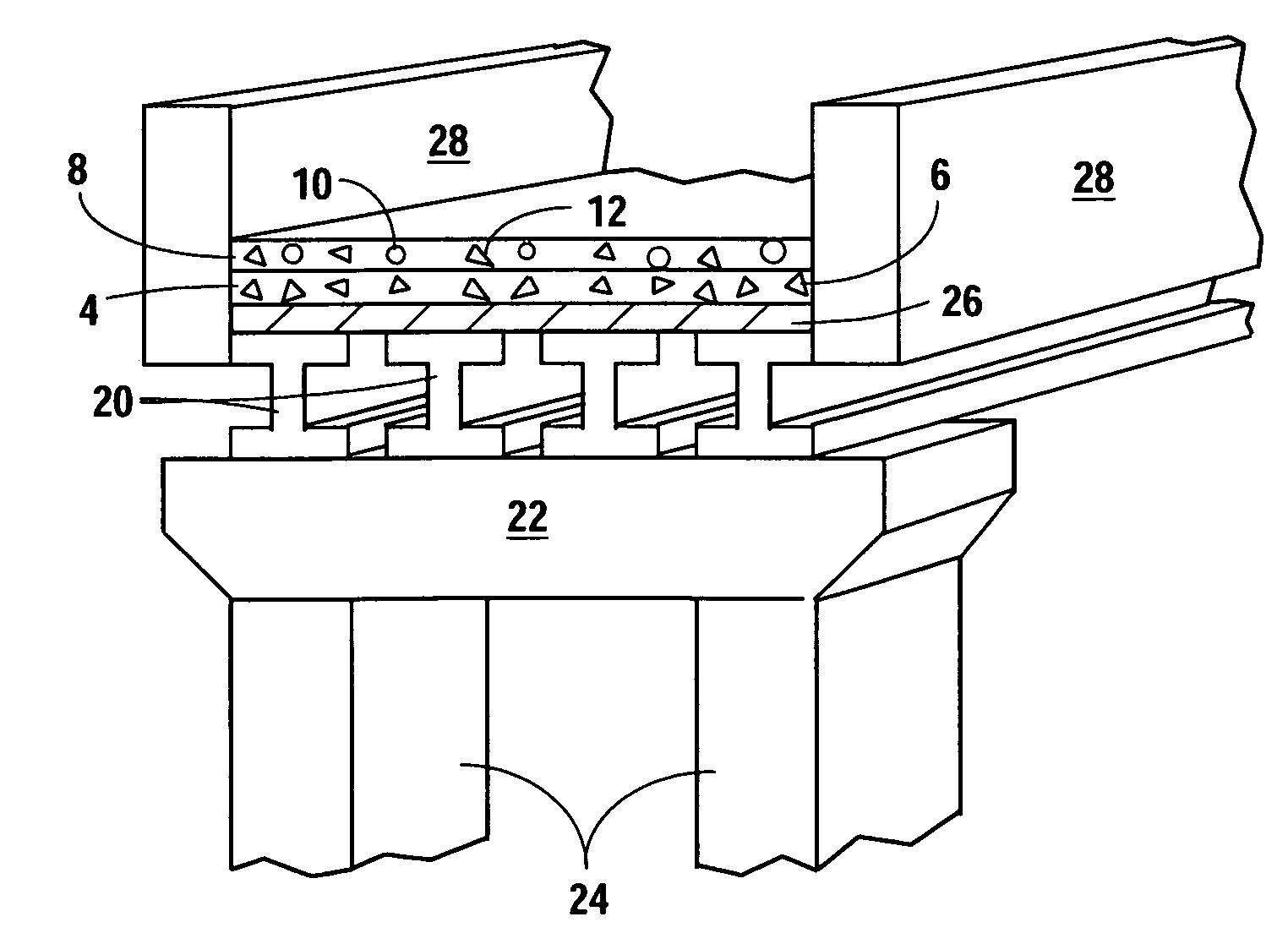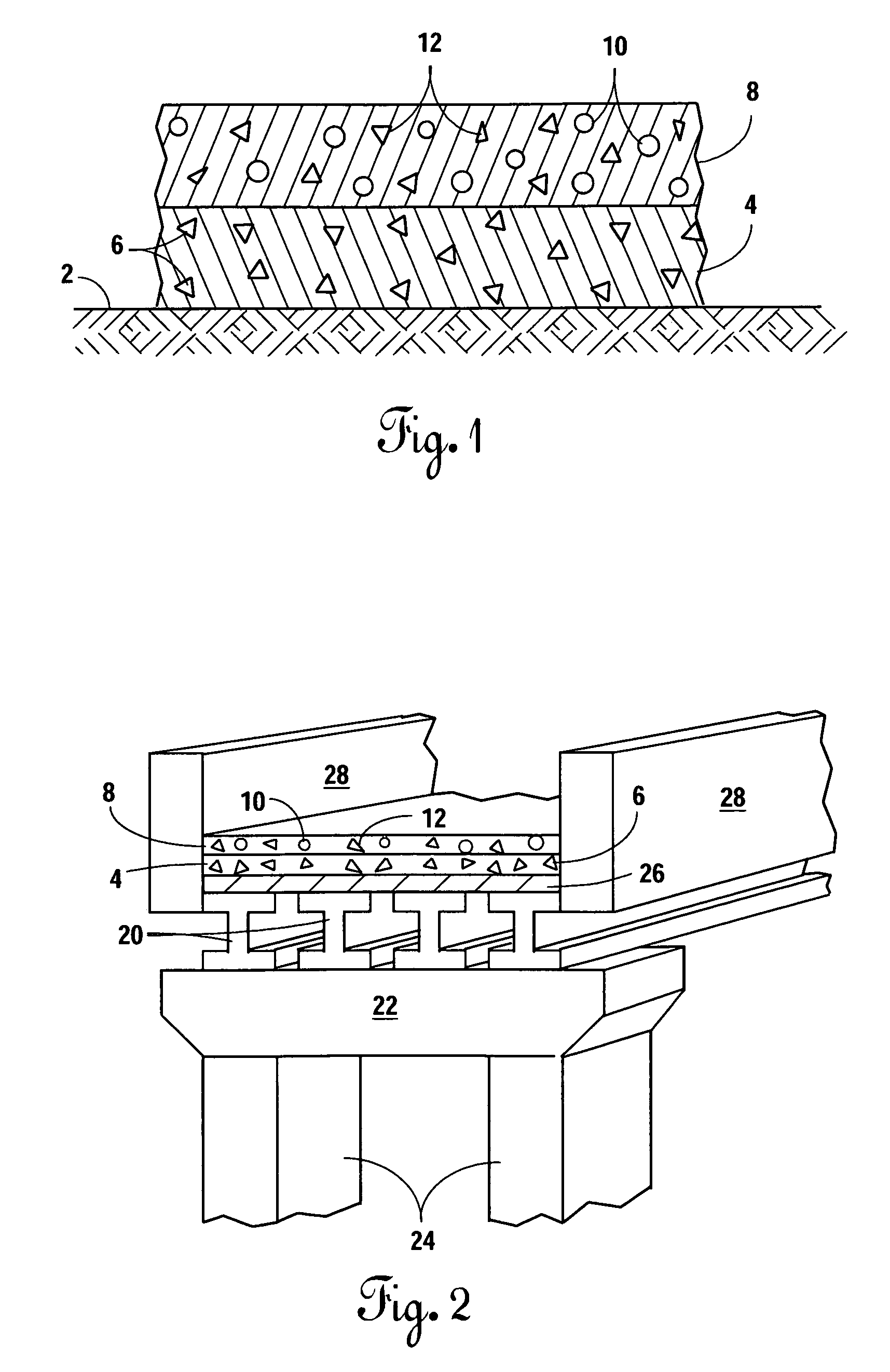Method and composition for enhancing the insulating properties of a trafficked surface
a technology of insulating properties and composition, applied in the direction of bridges, bridge construction, roads, etc., can solve the problems of severe accidents, bridges and overpasses are particularly susceptible to this problem, and unsafe driving conditions
- Summary
- Abstract
- Description
- Claims
- Application Information
AI Technical Summary
Benefits of technology
Problems solved by technology
Method used
Image
Examples
second embodiment
[0019]the insulative wearing course 8 is a cement concrete pavement. Foam plastic pellets 10 are added to a mixture of mineral aggregate 12 and portland cement binder in an amount approximately equal to 25% to 30% of the total volume of the mixture. Alternatively, the foam plastic pellets 10 may be added to the drum of a concrete mixer truck containing a cement concrete mixture. Adding the foam plastic pellets 10 to the aggregate composite material mixture prior to pouring the pavement is not essential, but it is preferred, as loose plastic foam pellets may be difficult to work with in inclement weather. As with an asphalt concrete pavement, the amount and quality of mineral aggregate 12 added will vary depending on the particular circumstances and a road builder with ordinary skill in the art will be able to determine the qualities best suited for obtaining a homogenous mixture. The cement concrete mixture is then poured onto the desired substrate, either a base course 4, a prepare...
third embodiment
[0020]the insulative wearing course 8 is a pavement constructed from prefabricated concrete slabs. Cement concrete is mixed according to the cement concrete pavement embodiment described above. The cement concrete mixture containing the foam plastic pellets 10 is poured into a form designed for concrete pavement slabs of dimensions well known in the art. After they have cured, the prefabricated concrete slabs are transported and applied to the desired substrate, either a base course 4, a prepared subgrade 2 as in FIG. 1, or a deck 26 as in FIG. 2.
[0021]An alternative embodiment of the present invention is illustrated in FIG. 2. A bridge or overpass is constructed according to traditional methods well known in the art. Preferably, steel reinforced concrete girders 20 are installed longitudinally between supports 22 attached to reinforced concrete piles 24 of the desired height. The concrete girders 20 support the deck 26 of the roadway. Concrete barrier walls 28 or guard rails should...
PUM
 Login to View More
Login to View More Abstract
Description
Claims
Application Information
 Login to View More
Login to View More - R&D
- Intellectual Property
- Life Sciences
- Materials
- Tech Scout
- Unparalleled Data Quality
- Higher Quality Content
- 60% Fewer Hallucinations
Browse by: Latest US Patents, China's latest patents, Technical Efficacy Thesaurus, Application Domain, Technology Topic, Popular Technical Reports.
© 2025 PatSnap. All rights reserved.Legal|Privacy policy|Modern Slavery Act Transparency Statement|Sitemap|About US| Contact US: help@patsnap.com


